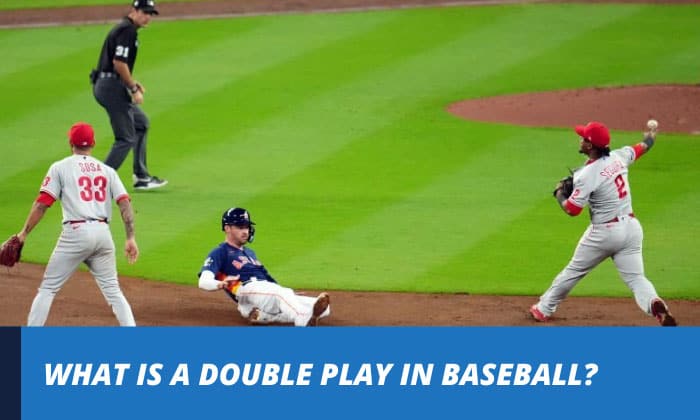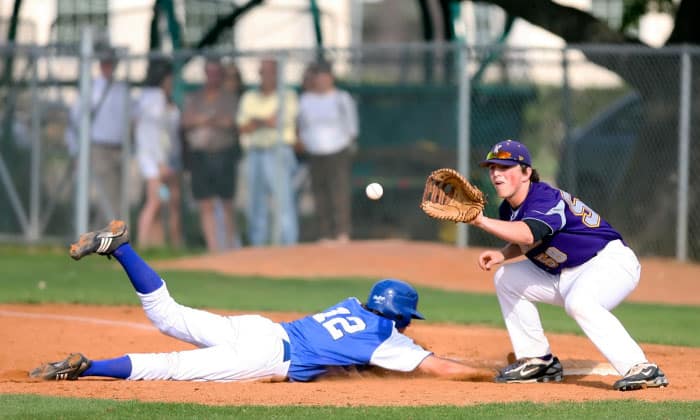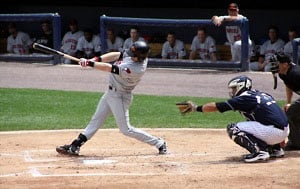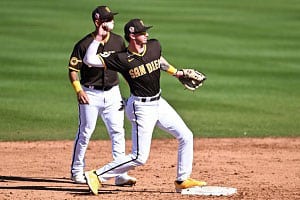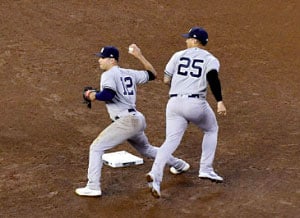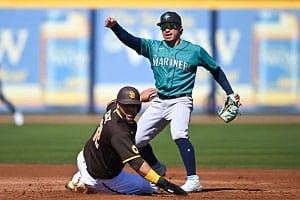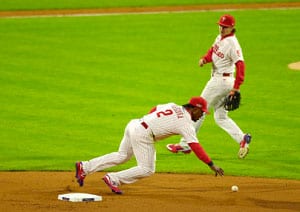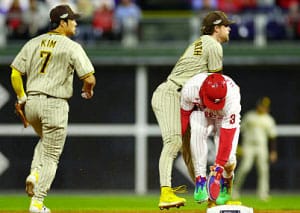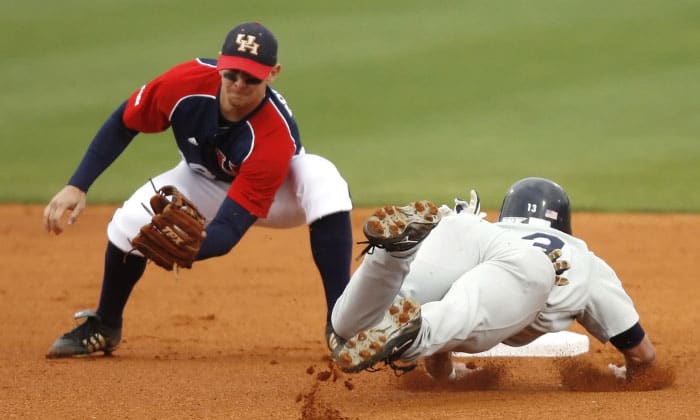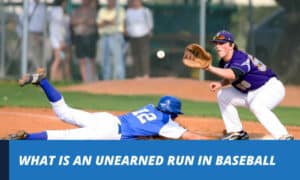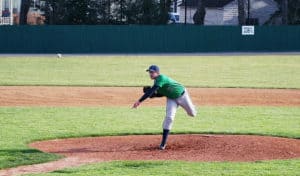In baseball, you need to learn a lot of terms to understand the nuances of the game. One of which is “double play”, which is one of the most fascinating events to happen in a match.
I know what you’re thinking! What is a double play in baseball? Continue reading!
A double play can be quite complex for casual fans to understand but to simplify, this happens when a single batted ball rules out two offensive players in one sequence.
DP Baseball Meaning
1. Double play in baseball definition
Let’s first talk about the most basic question, “what does DP stand for in baseball?” A DP stands for a double play in baseball, meaning, this typically occurs when two players get ruled out in one single bat during a single sequence of the match.
Just a quick fun fact, a double play is also fondly called the “pitcher’s best friend” because of its nature, giving any team an instant advantage over their opponent.
Double plays typically happen during flyouts meaning that the defense caught the ball while in the air, and a runner tried to get away from his original base towards the next. However, it can also happen when the first base gets ruled out by the fielder, then proceeds to tag runners after counting out the bases.
2. Example scenarios of a double play
A double play in a baseball game can be dissected through a set of examples below:
- A ground ball was struck by the batter
This type of double play is also known as the GIDP which is considered the most common type of double play in baseball.
The first scenario is when an infielder puts out the second base as this rules out the runner who tries to move from the first base and then proceeds to put out the first base to rule out the batter from advancing. This is also otherwise called the “force double play”.
On the other hand but still, within the ground ball territory, it is also possible for an infielder to put out the first base and then proceed to rule out the second base runner. This is opposite to the first scenario which is why this is called the “reverse force double play”.
- The ball is struck in the air by the batter
Unlike the two scenarios above, this case of a double play involves balls that are being struck and travel through the air before it lands on the fielder’s hands.
This happens when a line-drive type of ball catches the first baseman’s hands and then proceeds to rule out the first base, disallowing the baserunner to return to it. In baseball, this is commonly known as the “unassisted double play”.
Double plays also happen in the presence of a fly ball when it catches the right fielder’s hand. When a baserunner tries to advance to second base, he gets tagged by the shortstop to stop him from fully getting to the said base.
- The batter gets struck out
This type of double play happens when a base runner gets tagged by the middle infielder while on his way to advancing to second base. This can also be called the “strike ’em out, throw ’em out” type of play.
3. Strategy and slang for a double play
What does a DP mean in baseball, for both teams? Needless to say, this play wrecks the advantage of the batting team but benefits the team on the field.
In baseball double play crossword slang, it is called “twin killing”, or “turning two”. These terms can also be considered double-play synonyms.
4. The meaning of numbers in a double play in baseball
You may have watched a baseball game with your friends and wondered what the random numbers mean when they talk about it. In a double play in baseball, the numbers tell the spectators who among the players took part in the play and what the exact sequence was when the DP happened.
To give you an idea of what numbers correspond to certain positions, read below:
| Position | Number |
| Pitcher | One/1 |
| Catcher | Two/2 |
| First Baseman | Three/3 |
| Second Baseman | Four/4 |
| Third Baseman | Five/5 |
| Shortstop | Six/6 |
| Left Fielder | Seven/7 |
| Center Fielder | Eight/8 |
| Right Fielder | Nine/9 |
5. Types of double plays
Now that you already know the different numbers for the different designated positions, let’s head on to knowing some of the types of double plays:
01 6-4-3 double playThis is considered to be the most common where shortstop gives the ball to the second baseman to rule out the second base. He then throws the ball to the first baseman to rule the batter out.
02 4-6-3 double play in baseballThis type is similar to the first one, it’s just that the second baseman first lays a hand on the ball, which is then thrown to the shortstop and then lastly to the first baseman.
03 3-2-8 double play in baseballThis is one of the rarest types in major league baseball double plays where the first baseman throws the ball to the catcher and then toward the centerfielder to get the final out.
6. How does double play work?
A double play typically works when 2 successful rule-outs are achieved out of 3 possible outs during one sequence in a game. As was said in the previous part, a fielder’s position is assigned systematically according to their position.
7. What are double-play leaders by position?
When we look at statistics, the most number of double plays by a short stopper belongs to Omar Vizquel with 1,734 double plays. For the pitcher position, it is Greg Maddux, Ray Schalk for the catcher position, Mickey Vernon for first baseman, Bill Mazeroski for second baseman with 1,706, and Brooks Robinson for third baseman with 618.
While for a single season, the Philadelphia Athletics held the most number of turned double plays, scoring roughly 217 of them in one season during 1949.
Frequently Asked Questions
Definition of an unassisted double play
One of the rare types of double plays is unassisted double play. This typically happens when an infielder, who is usually the shortstop or second baseman, was able to catch a line drive.
By catching a line-drive ball, the infielder now has the ability to rule out the batter and at the same time put out the runner from second base before he even has the chance to tag up.
Although the unassisted double play is commonly performed by an infielder, an outfielder may also be capable of doing this with a short fly ball, unlike the line drive.
Other types of double plays in baseball
In baseball, there are as many as 17 types of double plays that could possibly happen. While we mentioned the 3 of them above, here are the other types:
- 1-2-3
- 5-4-3
- 3-2-3
- 3-6-3
- 2-6-3,
- 1-5-3, 3-5-4
- Fly out, runner ejected for attempting to score after being tagged
- Catching a player stealing while on strikeout
- 3-2, before throwing, the first baseman steps on the bag
- 3-6, before throwing, the first baseman steps on the bag
- 5-3, Third baseman makes contact with bag
- Before he could return for the fly ball, the runner doubled off
- Double play/lineout
- 361
- 6-3, when the middle infielder personally tags the base and throws to first
- 1-6-3
What are all-time GIDP leaders?
Records show that the all-time GIDP leaders are Pujols with 426, Miguel Cabrera with 353, Cal Ripken Jr. with 350, Ivan Rodriguez with 338, and Hank Aaron with 328.
In a single season, the record of GIDP leader belongs to Jim Rice with 36 DPs grounded into and a PA of 708 in 1984.
Conclusion
You have reached the final part of the article, “What is a double play in baseball?”. Baseball terms can be very confusing but it is necessary to understand them to grasp the underlying meanings behind every signal, and every movement of the match.
As lovers of the sport, may we always find ourselves fascinated with learning, although it can get time-consuming and sometimes hard.
Did I have your questions answered or do you have more questions in mind? Don’t worry, I got you! Check out the other articles on our site, we might just have the answers ready for you!

A powerful swing and the ball is flying across the field, just one hit, and we might never forget the thrill it brings. I do not know about you, but I never do. Every baseball game is the chance to compete with others and cooperate with your teammate. It is among my biggest passions.



